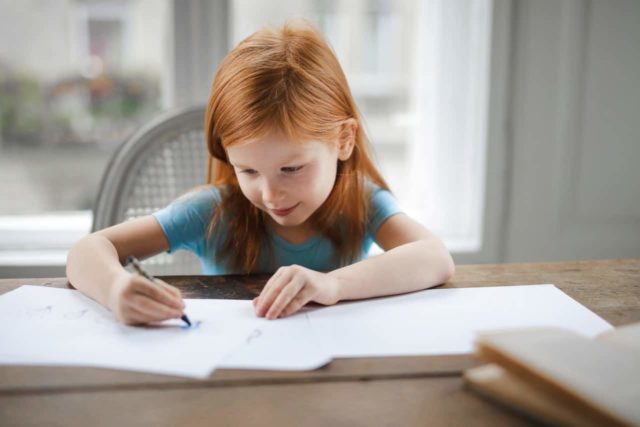A study done by the University of Waterloo found that drawing has a surprising effect on the learning process. Drawing helps students to process information in three different ways – semantically, kinesthetically, and visually. During the study, the researchers found that drawing the information given in lessons actually doubled students’ ability to recall, proving that drawing boosts memory skills.
Not only that, but drawing is an excellent way of improving coordination and the fine motor skills, which are essential for writing. You can also use drawing in your classroom to help calm and de-stress students, and give them an opportunity to express themselves.
Combining other subjects with drawing
If you want to have simple art lessons for elementary school children, you don’t need many resources for drawing. You can use the art lesson to combine several different subjects, creating real interest for your students. For instance, ask your students to spend some time sketching a grey wolf. Focus on the body shape of the wolf, and textures of the thick, lustrous fur. You can then talk about how the wolf has evolved for its environment, and the biology of the animal. You can discuss habitat, diet, and even talk about how the domestic dog has evolved from the wolf. A lesson plan that involves drawing can be varied and interesting for students, helping to spark their imaginations.
Learning aids and data visualisation
Drawing can be an extremely valuable tool in helping students to visualise the information that they have been presented with. This will in turn deepen their understanding of a subject. Small sketches, and even doodles linked together in a logical manner, can help them to analyse classical literature, explore fractals and geometry, and even visualise concepts in mathematics.
You can suggest to students that they use one half of their workbooks for written notes, and use the other half for diagrams, drawings, sketches and charts to help them process and absorb the information that they have been given in lessons. You could also use class time to ask students to draw anchor charts, maps or diagrams for the classroom walls, instead of buying posters. This will also help to reinforce essential information.
A form of self-expression
Never underestimate how important it is for students to express themselves in a creative way that has no boundaries and perimeters. Research done by the National Institute of Biotechnology Information found that drawing encourages open-ended thought, which helps with problem solving and creativity. In simple terms, it helps provide students with a different way of looking at things. This form of self-expression is important for personal development, and helps us to process emotions and feelings. Ultimately drawing will help students to understand themselves better and how they fit into the world around them.
Drawing is a simple skill that can be extremely beneficial in a classroom situation. It can help boost memory, enhance the learning experience and allow students to be creative.

